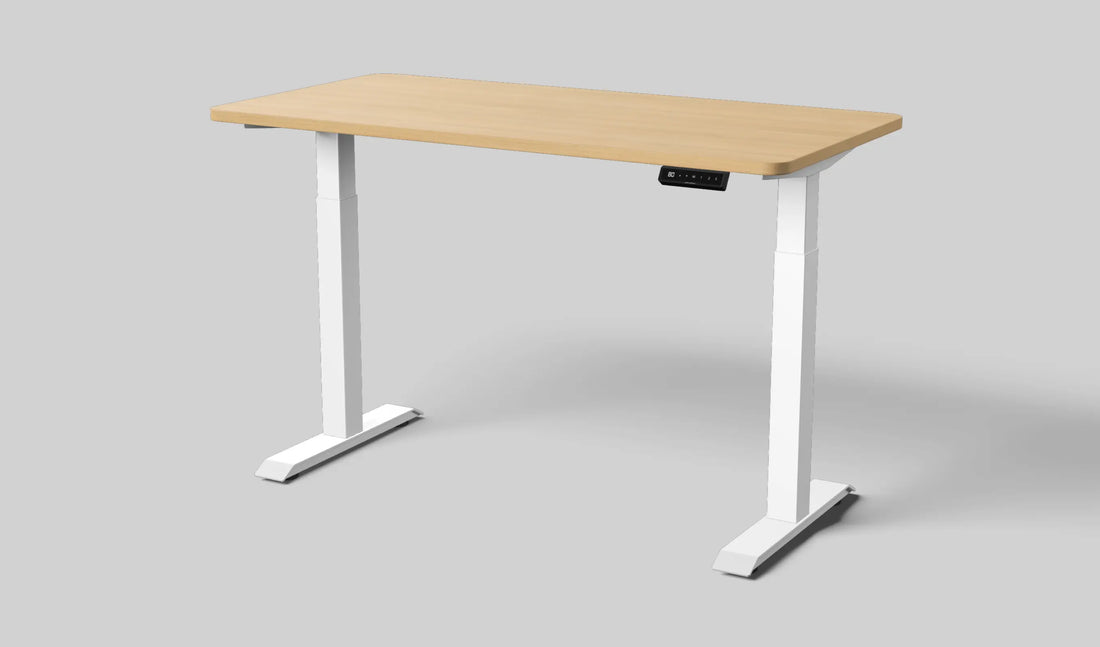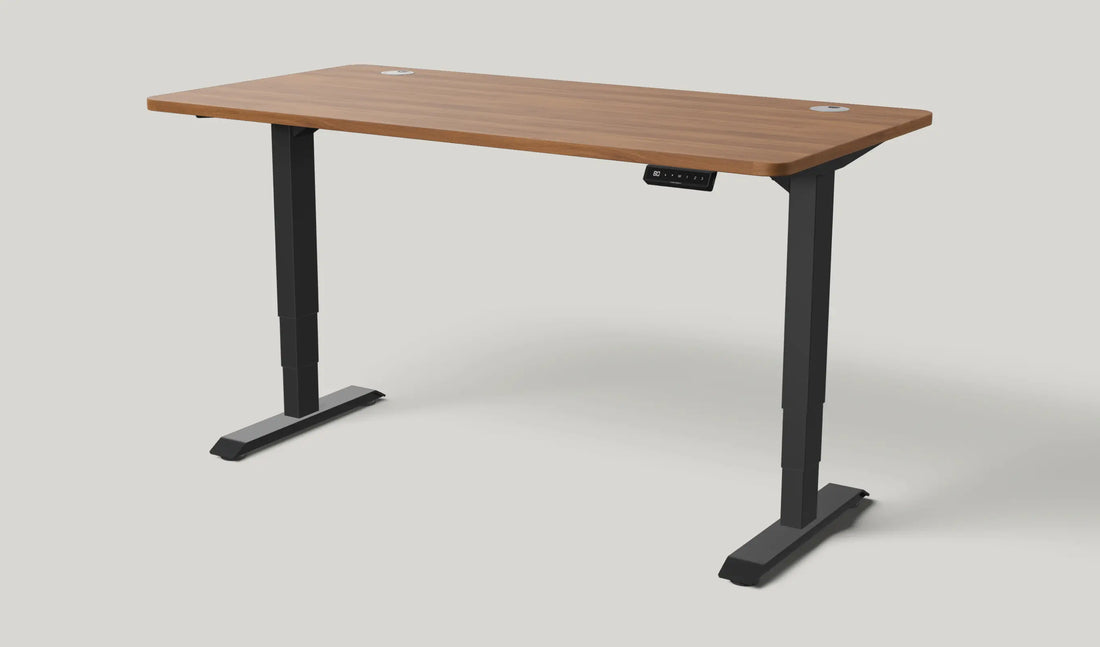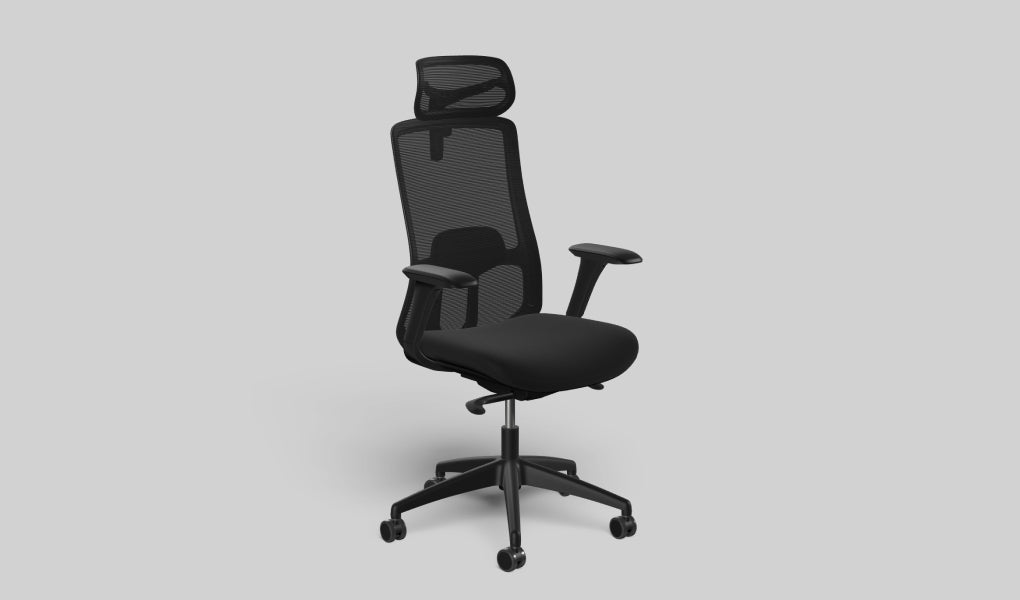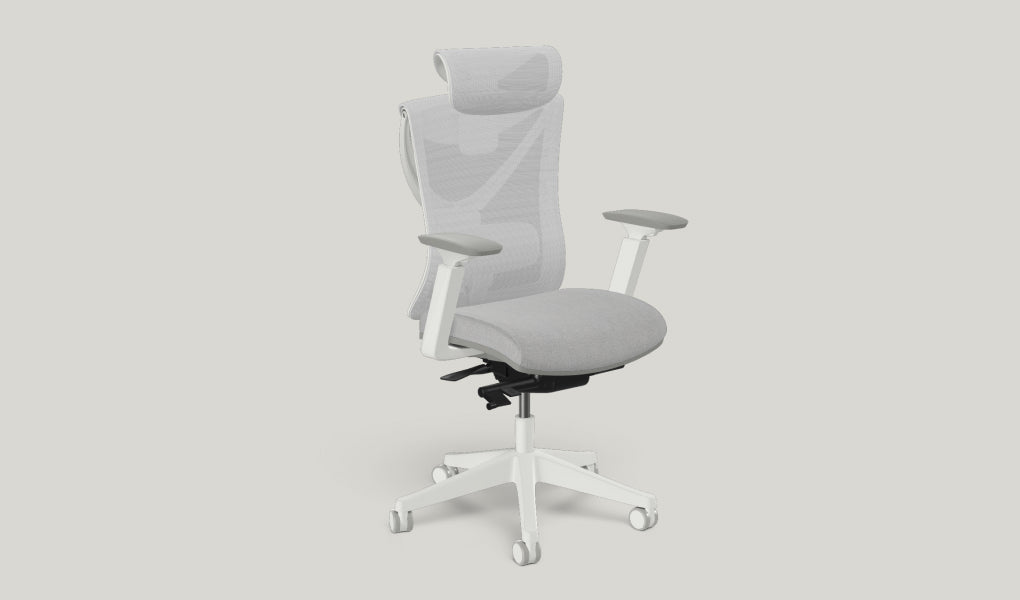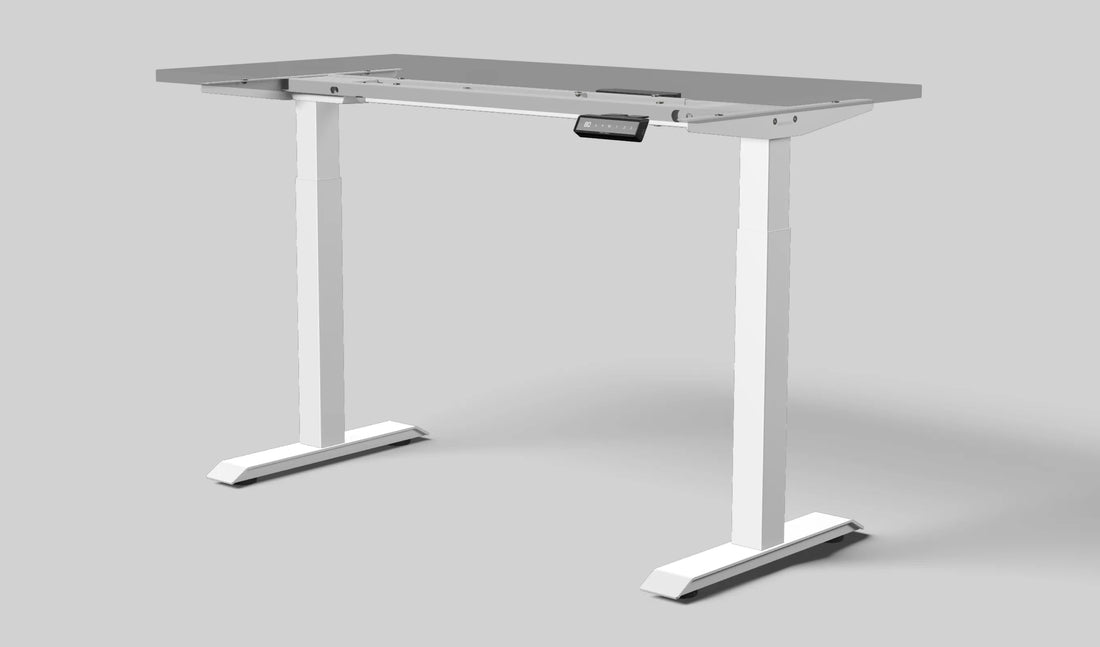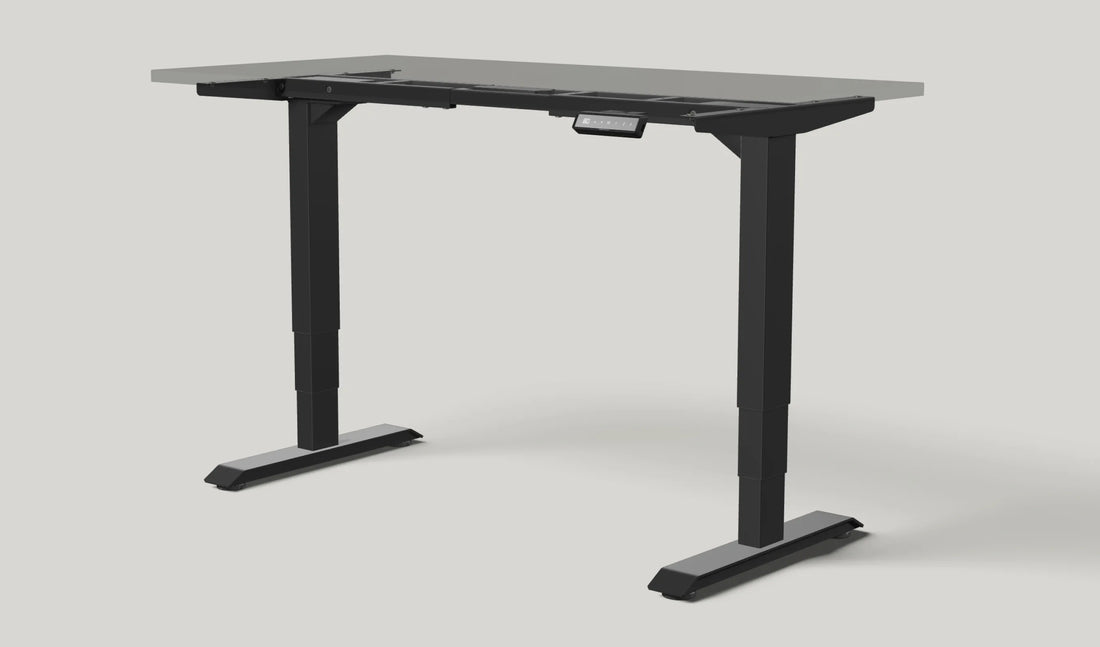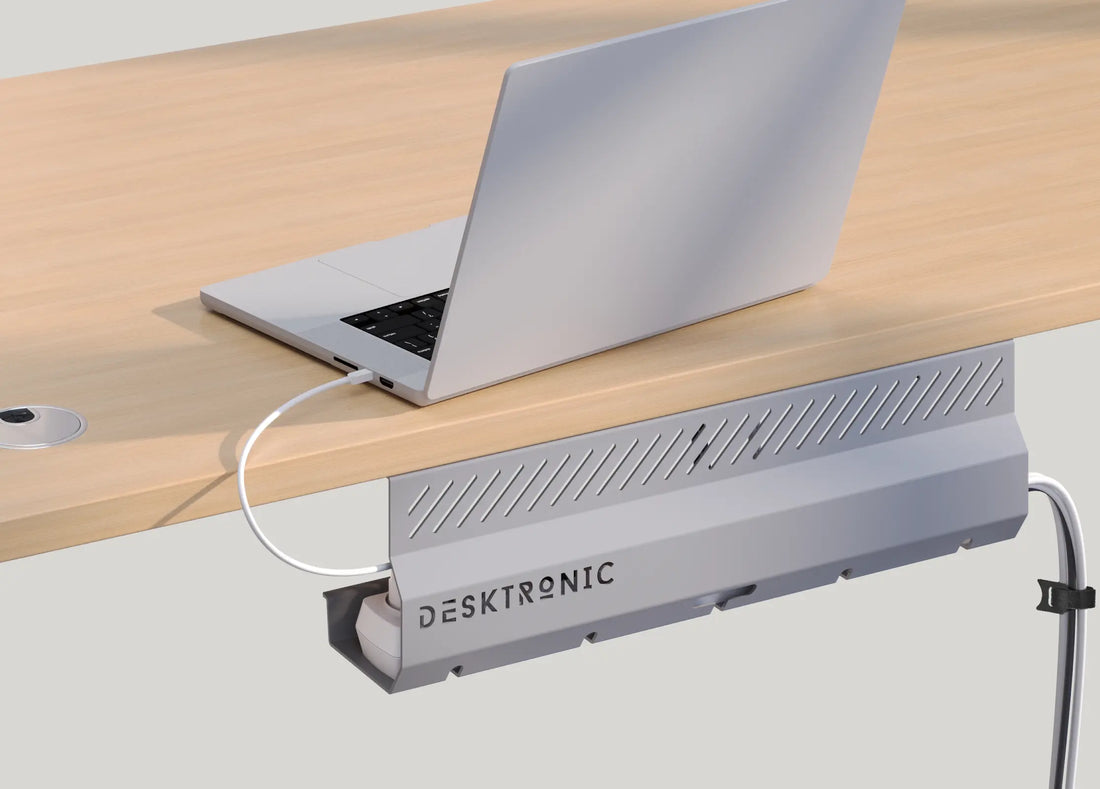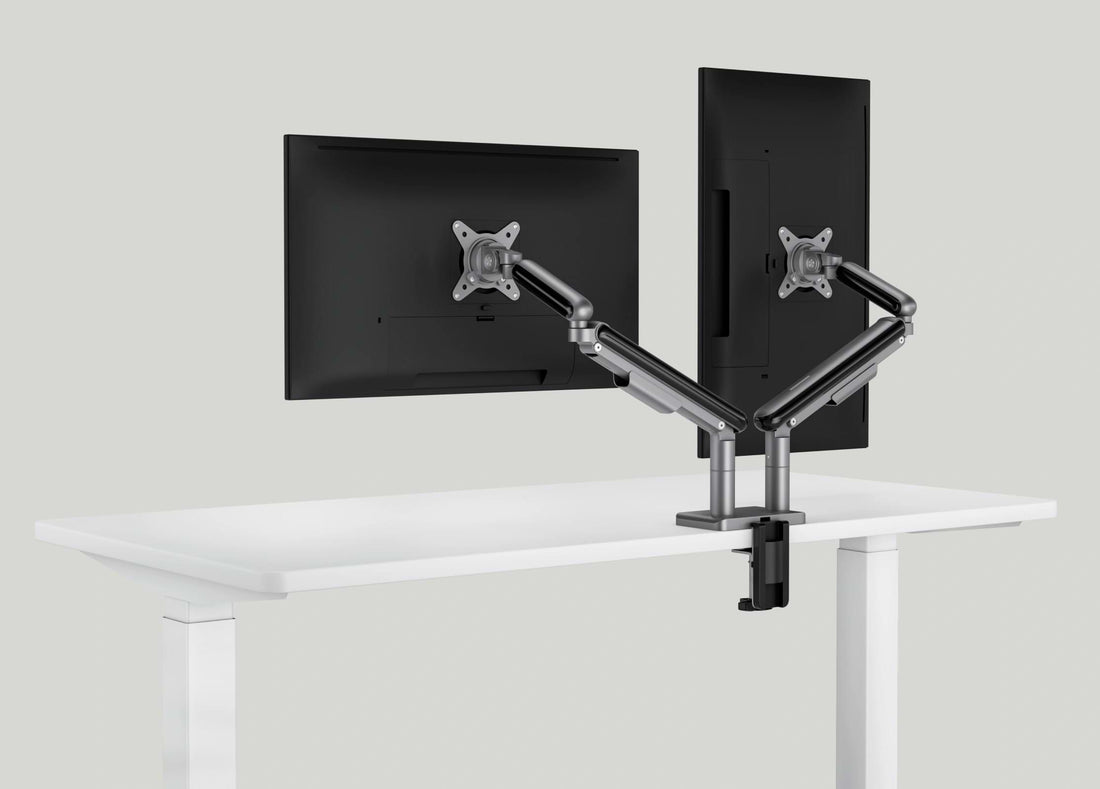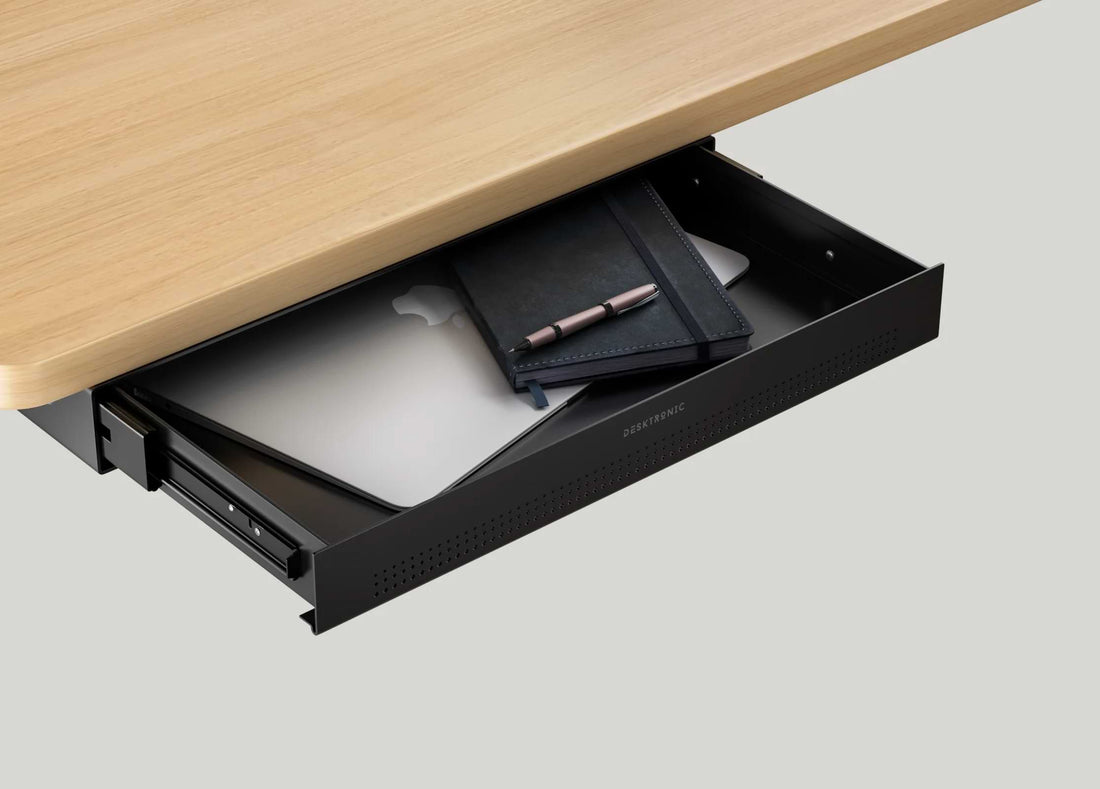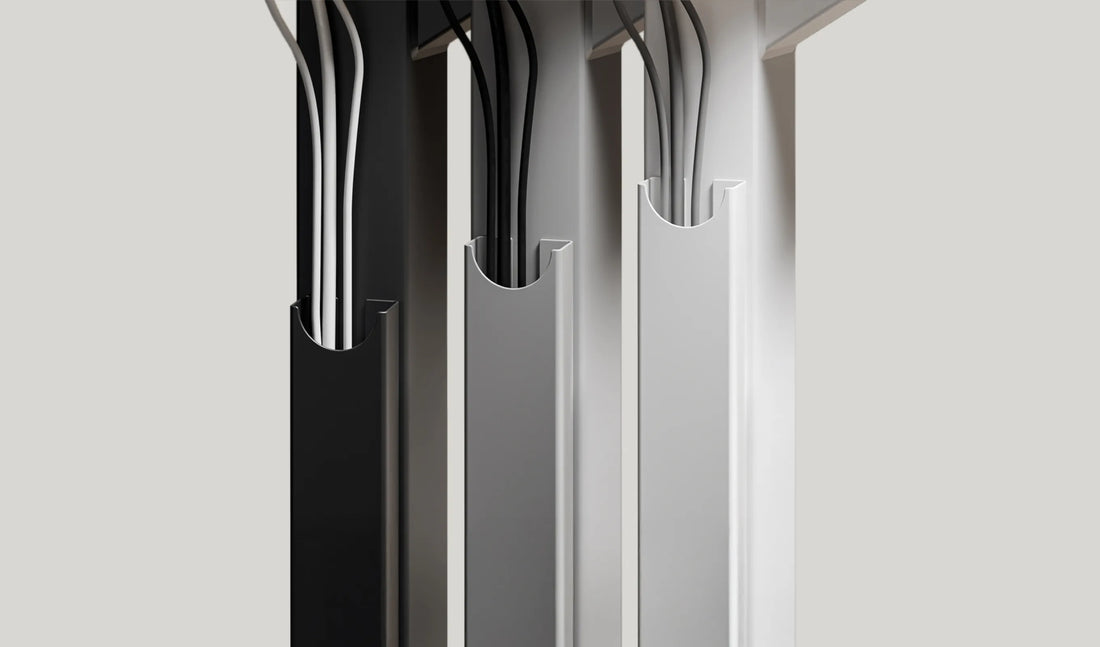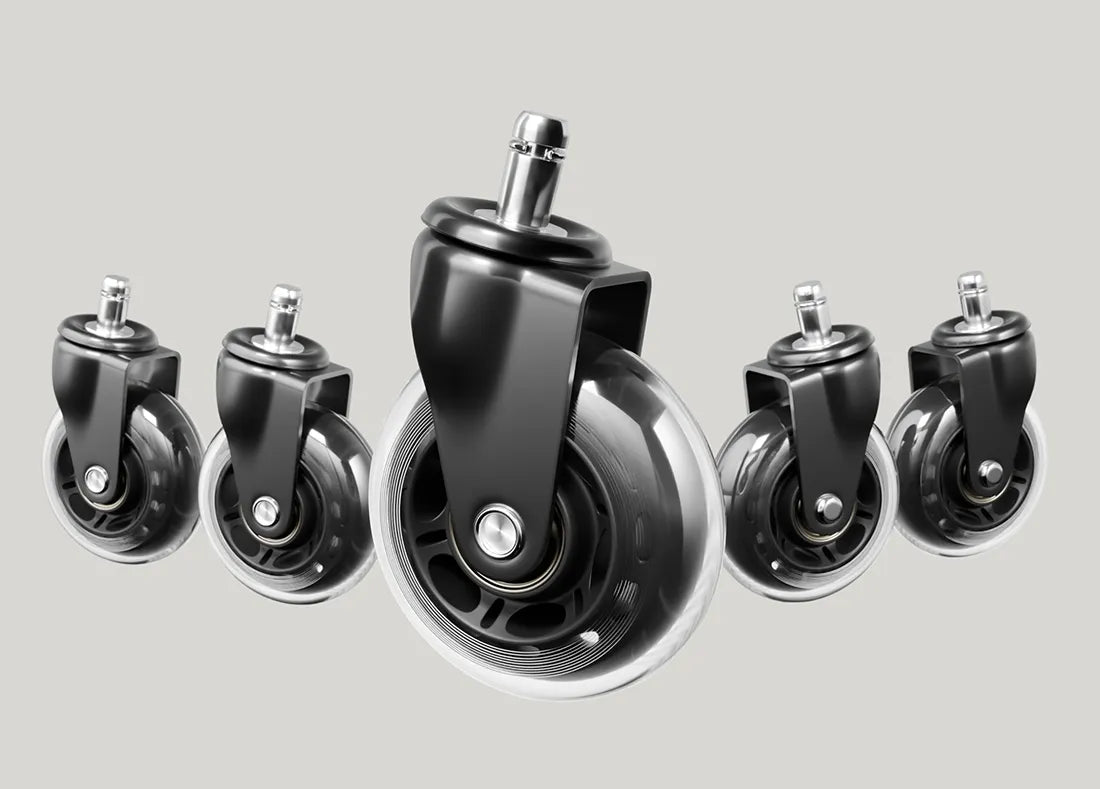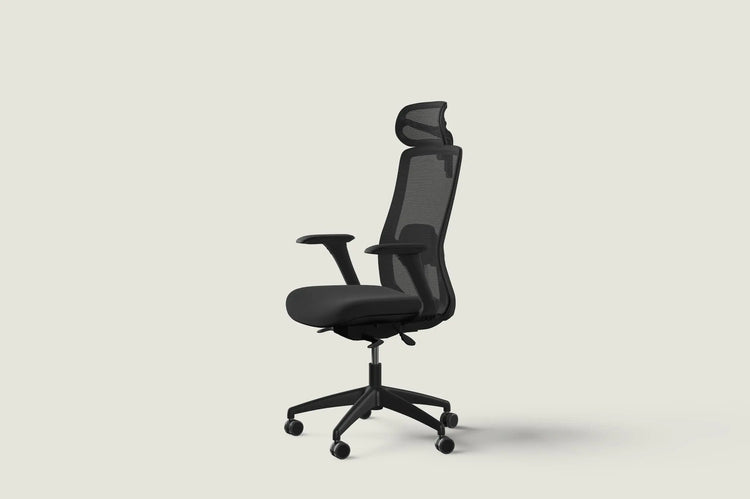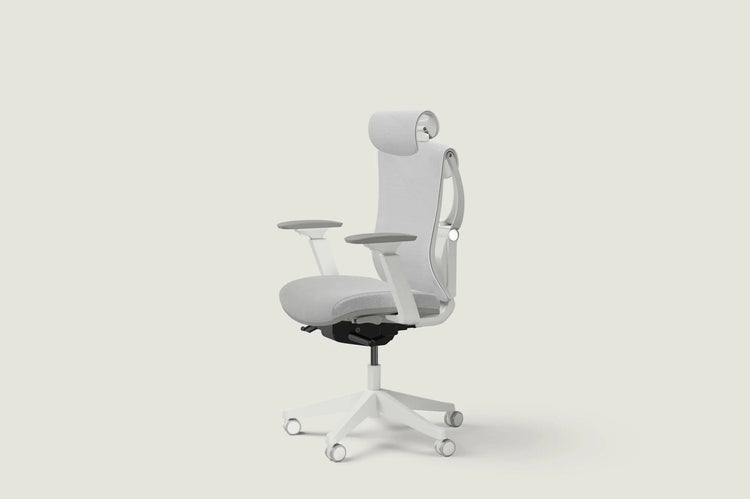Key Points
- Choose a standing desk chair that supports smooth transitions between sitting and standing for an active posture.
- We highlight four key features that make ergonomic chairs stand out from regular models.
- Alternating between sitting and standing throughout the day helps reduce back strain, fatigue, and circulation issues.
Key Features to Look for in a Standing Desk Chair
When choosing a chair for your standing desk, focus on design, adjustability, and stability. These features ensure the chair fits your body type, desk height, and work style.
Seat height and depth: Look for an extended height adjustment range so your feet rest flat or on a footrest when sitting. Proper seat depth prevents pressure behind the knees and promotes healthy blood circulation.
Lumbar support and backrest: A shaped backrest with lumbar support maintains the natural curve of your spine and helps reduce back pain during long workdays.
Armrests and mobility: Adjustable armrests keep your forearms relaxed and your shoulders neutral. Casters and a swivel base let you move freely across different floor types, boosting productivity and reducing strain.
Material and build quality: Breathable mesh, durable fabric, or high-quality leather keep you cool and supported. Always check weight capacity and warranty for reliability. For instance, Desktronic SitOne and SitPro chairs come with a 3-year warranty and reinforced bases built for everyday use.
Tip: Set your chair height first, then adjust lumbar support and armrests for perfect posture alignment.
Types of the Standing Desk Chair
Ergonomic chairs: These chairs are designed for all-day comfort and adaptability. Their adjustability, lumbar support, and smooth reclining functions help maintain proper posture whether you’re sitting or taking short breaks from standing. They provide the flexibility needed for hybrid and home office setups.
Balance stools: Balance stools encourage gentle movement by engaging your core and improving circulation. Their rounded base allows micro-adjustments that keep your muscles active, helping prevent stiffness during long work hours. They’re compact, lightweight, and ideal for flexible or smaller home office spaces.
Saddle or kneeling chairs: These options open the hip angle, ease pressure points, and promote upright posture – best for short-term use or creative workspaces.
Why an Ergonomic Chair Could Be the Best Option
Standing desks improve movement, but standing too long can lead to fatigue and leg strain. Research published in Rehabilitation Nursing found that prolonged standing can cause back pain swelling, and cardiovascular strain. Alternating between sitting and standing, using a supportive ergonomic chair, helps prevent these risks.
At the same time, sitting for too long isn’t ideal either. According to the Mayo Clinic, prolonged sitting increases the risk of obesity high blood pressure, and heart disease. Regular posture changes are essential for well-being.
An ergonomic chair bridges the gap offering posture support, flexible positioning, and comfort during breaks. Adjustable seat height, lumbar support, and stable casters allow you to maintain mobility without sacrificing comfort. With an ergonomic chair, you can stay productive and comfortable whether sitting, perching, or standing.
Final Thoughts
Choosing the right chair for your standing desk is about finding one that fits your body, supports natural movement, and adapts to your home office or remote setup. A well-designed ergonomic chair, such as Desktronic’s SitPro or SitOne, delivers lasting comfort and stability. Our upcoming Balance Stool encourages active sitting, helping you stay focused and energised all day.









